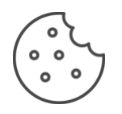Terra Preta in the Model Nursery
The nursery is to be supplied with heat and a biochar substrate from the pyrolysis plant located next door. Those who have become curious can find out more in the district's humus center with an attached permaculture nursery and conference center. Here, the waste heat from the pyrolysis plant is used to heat a large greenhouse with an attached green classroom. The Terra Preta substrate is also delivered from there. A small hotel is to be built next to it, which will use these rooms for conferences on weekends. School classes can garden here on raised beds with the Terra Preta produced next door and theoretically deepen their experience in the adjoining classrooms. Outside there is a permaculture nursery - the garden pioneers from Bec Hellouin were the model - the element of biochar substrate was added here.
A research station is to investigate the effectiveness of Terra Preta. Of particular interest here is how horticultural success factors can be transferred to agricultural applications.
During a visit to the farm in Bec Hellouin in Normandy, Rainer Sagawe made friends with Charles and Perrine Hervé-Gruyer. With the help of the expertise of permaculture experts such as Sepp Holzer and others, they managed to build humus on lean sandy soil within a few years and to achieve very good yields. Complemented by a combination of mutually supporting species such as onions and carrots or tomatoes and basil. Berry bushes and small fruit trees support biodiversity, butterflies, frogs and all kinds of birds settled here. The resulting ecological balance enables gardening without chemical fertilizers and without pesticides. Income of 55,000 euros per year from growing vegetables on a thousand square meters has been scientifically documented. The use of biochar has only just begun.
Charles and Perrine Hervé-Gruyer have laid down the principles of their work in a three-volume, thousand-page wonderfully illustrated work.
The combination of the two principles of permaculture and terra preta should lead to high-quality yields by vitalizing the soil. The aim is to bring the humus content to at least 6%, then the self-organization of the soil organisms begins.
The vegetables produced are to be delivered to the food banks, daycare centers, schools, hospitals and old people's homes.
In the winter half-year there should be regular events at which farmers and professional gardeners exchange and train.
In the adjoining gastronomy, visitors should be pampered with delicious dishes, with vegetables that are delivered directly from the nursery. If visitors need to relieve themselves, they go to the Terra Preta composting toilet, where solid and liquid are separated, collected and mixed with charcoal. In this way people should experience the closing of cycles through lived practice.
A vegetable shop is to be connected, and visitors can buy products from the farm here, including vegetables, juices, jams and eggs. The rods of pollarded willows should be made into baskets.
R.Sagawe, Sept.2021










